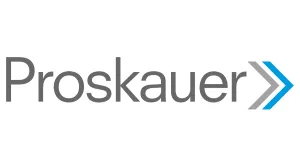- within Energy and Natural Resources topic(s)
- with readers working within the Banking & Credit industries
Non-Consensual Third-Party Releases are Not Permissible in Section 363 Sales or Rule 9019 Settlements, Regardless of the Suggestions of Some Bankruptcy Courts
Key Takeaways:
- In Harrington v. Purdue Pharma L.P. ("Purdue"), the Supreme Court held that the Bankruptcy Code does not authorize the practice of forcing creditors to release non-debtor third-parties under a chapter 11 plan of reorganization without their consent.
- Recent decisions by Bankruptcy Courts, however, appear to open a "backdoor" to obtaining non-consensual third-parties releases by suggesting that Purdue's prohibition of non-consensual third-party releases is limited to plan confirmation and does not extend to 363 sales and negotiated settlements.
- As detailed below, it would be folly to read Purdue's prohibition on non-consensual third-party releases as limited to chapter 11 plan confirmation because the Bankruptcy Code does not authorize the practice in any context (outside of asbestos cases), and if it did, such practice would be unconstitutional.
The Issue:
The Supreme Court held in Purdue that "the bankruptcy code does not authorize a release and injunction that, as part of a plan of reorganization under Chapter 11, effectively seeks to discharge claims against a nondebtor without the consent of affected claimants" (i.e. non-consensual third-party releases where the claims are not fully satisfied).1 In so holding, the Supreme Court expressly confined the scope of its ruling to the practice of non-consensual releases in the chapter 11 context, and deliberately left open (i) what may qualify as a consensual release and, (ii) what could be deemed full satisfaction of claims against a third-party.2
In the quest to find a workaround for Purdue's prohibition on non-consensual third-party releases, lawyers have attempted to seize on the perceived narrowness of Purdue's holding, arguing that it is limited to a plan of reorganization under chapter 11, and does not apply to asset sales free and clear of liens of interests under Bankruptcy Code section 363 or settlements under Bankruptcy Rule 9019. Three recent Bankruptcy Court decisions appear, at first blush, to embrace these arguments by overruling objections based on Purdue grounds to sales and settlements. On closer inspection, however, the cases did not implicate true non-consensual third-party releases at issue in Purdue, and any suggestion that non-consensual releases are permitted outside of the plan context is incorrect.3 As discussed in this article, the reasoning of Purdue is equally applicable outside of the chapter 11 plan context: non-consensual releases are barred in all contexts (except for asbestos cases under section 542(g)), and to the extent not barred, they would be unconstitutional.4
Purdue's Holding Applies to Assets Sales and Negotiated Settlements:
Following the Purdue decision, three Bankruptcy courts appear to have found its central ruling inapplicable to third-party releases in certain situations.5 In In re Hopeman Brothers, Inc. 2025 WL 297652 (Bankr. E.D. Va. Jan. 24, 2025) ("Hopeman") the Bankruptcy Court for the Eastern District of Virginia rejected a motion to stay pending appeal of an order approving a settlement between the debtor and certain of their insurance carriers.6 Under the settlement agreement, the insurers agreed to pay a "sum certain" to the debtor to establish a liquidation trust, which would be used to pay holders of asbestos-related claims.7 In return, the insurers would be allowed to buy back their policies from the debtor under section 363 of the Code.8 The agreement also contained an injunction which "would operate to prevent all persons who hold or assert, or may in the future hold or assert, any claim against the Debtor or the Certain Settling Insurers[.]"9 Certain parties argued this injunction violated Purdue's restriction on non-consensual third-party releases.10
The court disagreed.11 First, the court noted the "power to enjoin creditors from pursuing the purchasers" of assets sold under 363 is an "inherent . . . authority."12 Specifically, the court reasoned that an injunction barring suit against a purchasing-creditor is necessary to uphold the "free and clear aspect" of section 363 sales.13 The court further found the sale satisfied section 363 of the Code because the claimants being enjoined could be compelled to accept money in satisfaction for their interests.14 The court mused that it "has not found, and has not been pointed to, any decision extending Purdue's decision to § 363 sales" and that Purdue was "limited to the issue before it, i.e. whether non-consensual non-debtor releases may be included in chapter 11 plans."15 It concluded, therefore, that the sale was proper under section 363, and not subject to Purdue's limitations.16
Properly understood, however, this case does not implicate Purdue or demonstrate that non-consensual third-party releases are permitted in a section 363 sale. Purdue concerned the release of direct claims that creditors of the estate held against the Sackler family.17 The claims were not derivative of the debtors' claims, nor were they against property of the estate.18 Unlike Purdue, the claims implicated here were against the debtors, who held insurance coverage for such claims.19 The insurance policies themselves are property of the estate,20 and there were no direct claims or privity between the estates' creditors and the insurer. Selling the insurance policies, as property of the estate, back to the insurers, and enjoining claimants from separately pursuing the insurance carrier was an appropriate disposition of estate assets and does not trigger Purdue's restriction. The third-party claims were derivative of the debtors' claims against its insurer, and it is the debtors' prerogative to determine the disposition of its property: here, a value maximizing sale. As a result, enjoining creditors from pursuing claims against the purchaser that are derivative of, or attached to, the estate property being sold is an appropriate application of section 363, as is channeling those claims to a trust formed to hold the sale proceeds. This practice is distinct from non-consensual third-party releases based on independent third-party claims. As the dissent observed in Purdue, "when the debtor settles with the non-debtor third-party, that settlement also extinguishes the creditors' derivative claims against the non-debtor. And the creditors' consent is not necessary to do so."21
The Hopeman court also found the debtor met the requirements for approval of a settlement agreement under Rule 9019, which requires a court to determine whether the proposed settlement provision falls below the lowest point in the "range of reasonableness."22 The court distinguished between bar orders enforcing approved settlement agreements and the "type[] of non-consensual, third-party releases disallowed by Purdue."23 The court concluded Purdue's holding does not reach orders enforcing negotiated settlement agreements under the Code.24
While the Hopeman court is correct that Purdue did not prevent the settlement, it is not because Purdue is limited to the chapter 11 context. Rather, it is because the settlement does not provide a non-consensual third-party release. Two parties cannot agree to negotiate away the rights of a third-party, no matter how "reasonable" that agreement may appear. The parties in Hopeman were doing no such things—they were simply negotiating the buyback of insurance policies, which are estate property.
The Hopeman court discussed the case of in Wright v. Bird Global, Case No. 24-CV-23086-RAR (S.D. Fla. Aug 21, 2024) ("Bird Global") in distinguishing Purdue.25 There, the debtor negotiated a similar insurance settlement to that in Hopeman as part of its plan of reorganization.26 The Bird Global court found Purdue was distinguishable because the debtor sought approval of the insurance settlement under section 363 of the Code and under Rule 9019, whereas in Purdue the debtor relied on section 1123(b)(6).27 While we agree that Purdue is not implicated, we disagree with this reasoning. The Supreme Court was clear in Purdue that no provision in the Bankruptcy Code authorizes non-consensual third-party releases.28 Section 1123(b)(6) merely states that a plan may "include any other appropriate provision not inconsistent with applicable provisions of this title." 11 U.S.C. § 1123(b)(6). It follows that if such releases were permissible under section 363 or Rule 9019, then they would be permissible in the plan context under 11 U.S.C. § 1123(b)(6). Simply because the Supreme Court appeared to cabin its holding to the chapter 11 plan context does not mean that its reasoning is similarly limited. Indeed, the Court specifically found that there is only one context in which a third-party release is permissible, and that is in asbestos-related cases.29
Finally, the court in In re Roman Catholic Diocese of Rockville Centre, 665 B.R. 71 (Bankr. S.D. N.Y. 2024) ("In re Roman") discussed Purdue's applicability in the context of sale orders.30 The debtor negotiated several buy back transactions with their insurance carriers, in exchange for releases and injunctions of the claims subject to the carriers' coverage.31
The U.S. Trustee argued Purdue applied to sale orders in bankruptcy where the sale order included non-consensual third-party releases.32 The debtor tried to distinguish Purdue by arguing it involved releases in plan confirmation, and not a sale order.33 However, the debtor otherwise correctly argued that the "enjoined claims directly affect the res of the Debtor's estate" and therefore, "the Sale Order's injunction is properly tailored and does not enjoin direct claims of creditors against non-debtor insurers."34
The In re Roman court undertook a similar review in approving the discharge provisions as the courts in Hopeman and Bird Global: (1) sales pursuant to section 363 result in the purchaser taking property free and clear of any interest; (2) a debtor need only satisfy one of the subsections of section 363(f) of the Code for sale approval purposes; and (3) under Rule 9019, if a court determines a settlement is fair, equitable, and in the best interest of the estate, the court may approve the settlement.35 Importantly, the court's approval did not address the debtor's arguments related to Purdue.
Even if the Bankruptcy Code authorized Non-Consensual Releases, such Authorization would be Unconstitutional:
As explained above, the suggestions by Bankruptcy Courts that Purdue's prohibition on non-consensual third-party releases is limited to the chapter 11 plan context fail to understand the rationale behind the Supreme Court's conclusion. There is no provision, outside of 524(g), that would authorize such releases. But even if there were, the releases would be unconstitutional.
The Purdue court did not have to reach the issue of whether non-consensual third-party releases are constitutional because it held there was no statutory authority for such releases. Nevertheless, if bankruptcy courts were to (incorrectly) hold that authority exists in section 363 or Rule 9019, the releases should be denied on constitutional grounds.
Non-consensual third-party releases commit a myriad of constitutional violations. They deprive creditors of their fundamental right to sue and have their claims adjudicated, a right long recognized as fundamental by the Supreme Court.36 They violate the Fifth Amendment by taking property (i.e., legal claims) without just compensation or due process, as required by Louisville Joint Stock Land Bank v. Radford, 295 U.S. 555, 589 (1935), and Kuehner v. Irving Tr. Co., 299 U.S. 445, 452 (1937). They also violate the Seventh Amendment's guarantee of a right to jury trial in civil cases,37 by forcing creditors to relinquish rights against non-debtors without the ability to invoke a jury trial. Finally, they undermine the separation of powers by allowing Congress or the courts to extinguish common law claims outside the judicial process, contrary to the principles articulated in Murray v. Hoboken Land & Improvement Co., 59 U.S. 272, 284 (1856), and Plaut v. Spendthrift Farm, 514 U.S. 211, 218 (1995).
Conclusion:
The Supreme Court's decision in Purdue makes clear that the Bankruptcy Code does not authorize non-consensual third-party releases in any context outside of asbestos cases, and that any attempt to limit Purdue's prohibition solely to chapter 11 plan confirmation is misguided. While some recent bankruptcy court decisions have suggested that non-consensual third-party releases might be permissible in the context of section 363 sales or Rule 9019 settlements, a closer examination reveals that these cases did not actually involve true non-consensual third-party releases of independent claims against non-debtors. Instead, they addressed situations where the claims were derivative of the debtor's interests or involved estate property, which are fundamentally different from the direct third-party claims at issue in Purdue. The reasoning of the Supreme Court in Purdue applies broadly: the Bankruptcy Code does not provide statutory authority for non-consensual third-party releases in any context. Thus, any suggestion that there is a "backdoor" to obtain non-consensual third-party releases through asset sales or settlements is unfounded, and the practice remains impermissible.
Footnotes
1. Harrington v. Purdue Pharma, L.P., 603 U.S. 204, 206 (2024) (emphasis added).
2. Id. at 226 ("Nor do we have occasion today to express a view on what qualifies as a consensual release or pass upon a plan that provides for the full satisfaction of claims against a third-party nondebtor.").
3. Brief for Martin J. Bienenstock et al. as Amici Curiae, Harrington v. Purdue Pharma L.P., No. 23-124 (U.S. Dec. 4, 2023), at 25.
4. Id. at 41-44.
5. In re Hopeman Bros., Inc., 667 B.R. 101 (Bankr. E.D. Va. 2025); Wright v. Bird Global, Case No. 24-CV-23086-RAR (S.D. Fla. Aug. 21, 2024); In re Roman Catholic Diocese of Rockville Centre, 665 B.R. 71 (Bankr. S.D. N.Y. 2024).
6. In re Hopeman Bros., Inc, 667 B.R. at 109-10.
7. Id. at 104.
8. Id.
9. Id.
10.Id. at 105-06.
11.Id. at 109.
12. Id. at 106 (citation omitted).
13. Id. (citation omitted).
14. Id. at 107 (citing to Munford v. Munford (In re Munford, Inc.), 97 F.3d 449 (11th Cir. 1996); Markland v. Davis (In re Centro Grp., LLC), 2021 WL 5158001 (11th Cir. Nov. 5, 2021)).
15. Id. at 108.
16. Id. at 109.
17. Harrington v. Purdue Pharma, L.P., 603 U.S. at 204-08.
18. Id.
19. In re Hopeman Bros., Inc, 667 B.R. at 104.
20. See, e.g., First Fid. Bank v. McAteer, 985 F.2d 114, 117 (3d Cir.1993).
21. Kavanaugh, J., dissenting, Harrington v. Purdue Pharma L.P., 603 U.S. at 261.
22. In re Hopeman Bros., Inc, 667 B.R. at 104 n.9 (internal quotations and citation omitted).
23. Id. at 107.
24. Id. at 109.
25. Id. at 107.
26. Wright v. Bird Global, Case No. 24-CV-23086-RAR.
27. Id.; Harrington v. Purdue Pharma, L.P., 603 U.S. at 221, 223.
28. Harrington v. Purdue Pharma, L.P., 603 U.S. at 204, 227.
29. Id. at 221 ("That the code does authorize courts to enjoin claims against third-parties without their consent, but does so in only one context, makes it all the more unlikely that §1123(b)(6) is best read to afford courts that same authority in every context.") (emphasis in original).
30. In re Roman Catholic Diocese of Rockville Centre, 665 B.R. at 80.
31. Id. at 86.
32. Id. at 80.
33. Id. at 82.
34. Id. at 81.
35. Id. at 82-85.
36. See Crandall v. Nevada, 73 U.S. 35, 48 (1867); Slaughter-House Cases, 83 U.S. 36, 79 (1873).
37. See Granfinanciera, S.A. v. Nordberg, 492 U.S. 33, 53 (1989).
Slamming The Backdoor On Non-Consensual Third-Party Releases
The content of this article is intended to provide a general guide to the subject matter. Specialist advice should be sought about your specific circumstances.




